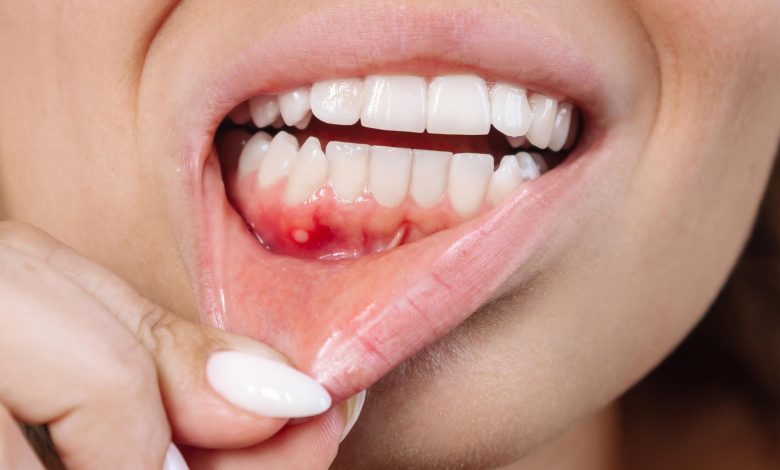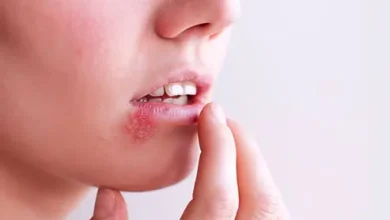Hidden Brain Damage May Start in Your Mouth, Scientists Say

Imagine this: the tiny bacteria that live between your teeth and in the gaps of your gums quietly nudge your brain toward long-term damage. It sounds like a premise from a sci-fi thriller, but over the last decade—and especially in fresh studies published in 2023–2025—researchers have been piecing together evidence that oral health and brain health are far more connected than most of us realized. The mouth, once thought of mainly as a site for cavities and fresh breath, may be an early battleground for processes that later show up as cognitive decline, stroke risk, and even the hallmarks of Alzheimer’s disease.
What researchers are finding: patterns that won’t be ignored
Large observational studies and laboratory experiments have reported several converging findings: people with chronic gum disease (periodontitis) or extensive tooth loss tend to show higher rates of cognitive decline, dementia, and stroke; certain oral bacteria have been detected in brain tissue; and animal models show that oral pathogens can trigger inflammatory changes in the brain that resemble neurodegenerative disease processes. Those are not small, isolated hints—multiple research groups and systematic reviews have replicated elements of the connection in different populations and experimental systems.
One recent, high-impact direction of research focuses on a periodontal microbe called Porphyromonas gingivalis (P. gingivalis). Scientists have detected DNA, toxins, and other markers of P. gingivalis in postmortem brain samples of people with Alzheimer’s, and in animal models this pathogen can cross into the brain and exacerbate hallmark Alzheimer’s pathology such as amyloid accumulation and microglial activation. That has led to a provocative, but cautious, hypothesis: chronic oral infection may be one of several contributing factors that start a cascade of brain inflammation and damage.
How might microbes in the mouth reach the brain?
Researchers propose several plausible routes:
- Bloodstream spillover: Severe gum disease creates chronically inflamed, leaky tissue. Everyday activities like brushing, flossing, or chewing can let bacteria and their inflammatory products enter the bloodstream, travel systemically, and potentially reach brain vessels. This low-grade, long-term bacteremia can increase vascular inflammation and atherosclerosis—setting the stage for strokes or microvascular brain injury.
- Nerve pathways: The trigeminal nerve and olfactory neural routes provide a direct physical path from oral/nasal tissues into central nervous system structures in animal models. Some microbes and their molecules appear able to move along neural tissue or to influence nearby cells, bypassing the blood–brain barrier.
- Molecular toxins and enzymes: Certain bacteria produce potent enzymes—gingipains from P. gingivalis are a prime example—that damage host tissue, interfere with immune function, and may help bacteria penetrate protective barriers. These toxins may alter how brain immune cells (microglia) behave, promoting chronic inflammation that slowly damages neurons.
Each route has evidence in laboratory animals and cell studies; demonstrating the same exact process in humans is much harder. Still, the convergence of vascular, microbial, and immune mechanisms makes the overall scenario biologically plausible.
Big studies linking mouth problems to strokes and cognitive decline
Population studies add weight to lab findings. Several longitudinal analyses have reported that people with poor oral health—measured as periodontitis, tooth loss, or frequent cavities—have a statistically higher risk of stroke and dementia years later. For example, meta-analyses and recent observational work found that missing teeth are associated with incremental increases in stroke risk, and a 21-year study reported notably higher stroke incidence among people with both cavities and gum disease. Similarly, about a dozen cohort studies and umbrella reviews have linked periodontal disease with increased odds of cognitive decline and Alzheimer’s-type outcomes. While such studies can’t prove causation, they show consistent associations across countries and study designs.
Not every scientist is convinced — here’s why
Healthy skepticism is essential. Most human studies are observational, meaning they detect correlations but can’t definitively say “A causes B.” People with poor oral health may differ in other important ways: they might have worse overall nutrition, less access to healthcare, higher rates of smoking or diabetes, or socioeconomic factors that also increase brain disease risk. Researchers try to adjust for these confounders, but no adjustment is perfect.
Another point is timing: does oral disease start the cascade, or is declining cognition or frailty making oral health worse (for example, by reducing the ability to maintain dental hygiene)? Reverse causation is possible, especially in older populations. Yet, the detection of oral bacteria and toxins in brain tissue, plus animal studies showing a plausible causal path, keep the hypothesis alive and urgent to study further.
What exactly does “brain damage” mean in this context?
“Brain damage” is a broad phrase. In the studies under discussion it can mean several interrelated phenomena:
- Stroke and vascular injury: Small vessel disease and frank strokes are forms of structural brain injury. Chronic systemic inflammation and atherosclerosis driven in part by periodontal inflammation may increase those risks.
- White matter changes and microvascular damage: Imaging studies sometimes show subtle white matter changes—areas where small blood vessel problems have damaged brain tissue—that are linked to poor oral health markers.
- Neuroinflammation and proteinopathy: In neurodegenerative diseases like Alzheimer’s, brain immune cells (microglia) and abnormal protein aggregates (amyloid, tau) play central roles. Laboratory evidence suggests oral pathogens or their products can amplify neuroinflammation and promote amyloid-related processes in animals.
These categories can overlap: a person might have microvascular damage that lowers cognitive reserve and also an inflammatory environment that accelerates neurodegenerative processes.
Practical implications — what should you do now?
If the mouth is a potential early site for processes that later harm the brain, the practical upside is that oral health is modifiable. Here’s what clinicians and public-health advisors are increasingly recommending:
- Treat gum disease early and seriously. If you have bleeding gums, persistent bad breath, deep pockets, or loose teeth, seek periodontal evaluation. Professional cleaning and, when necessary, periodontal therapy reduce bacterial load and inflammation. Several groups argue this could be an inexpensive and scalable public-health intervention if a causal link is confirmed.
- Keep up good daily hygiene. Brushing twice daily with fluoride toothpaste, daily flossing or interdental cleaning, and using antiseptic mouthwash when recommended are simple, evidence-based measures to lower oral bacterial burden.
- Watch your risk factors. Diabetes control, smoking cessation, and a balanced diet reduce both oral disease and vascular risk—two pathways relevant to brain health.
- Don’t ignore tooth loss. Tooth loss is more than a cosmetic issue—it’s a marker for cumulative oral disease burden and has been associated with worse vascular and cognitive outcomes in multiple studies. Regular dental visits and prosthetic rehabilitation (implants/dentures) when needed help maintain function and nutrition.
- Use dental care as part of overall preventive health. Primary care clinicians and neurologists are starting to recognize oral health as one piece of the prevention puzzle for stroke and dementia. If you or a family member is at high vascular risk, dental health should be part of the conversation.
Where the science needs to go next
The evidence base is compelling but not yet definitive. Scientists are calling for:
- Randomized clinical trials (RCTs): The gold standard to test if treating gum disease reduces cognitive decline or stroke risk. A few small interventional trials have been done, but large, long-term RCTs with cognitive and vascular endpoints are still needed.
- Mechanistic human studies: We need longitudinal work that traces oral inflammation markers, circulating bacterial products, imaging changes in the brain, and cognitive outcomes over time to map cause–and–effect more clearly.
- Better microbiome profiling: High-resolution mapping of oral microbial communities and how they change as people progress toward cognitive decline could identify specific microbial signatures to target.
- Integrated public-health models: Given the global burden of dementia and stroke, cost-effective measures that integrate dentistry into chronic disease prevention frameworks could have outsized benefit—if causality is established.
A few important caveats
- Not all dementia is caused by oral bacteria. Neurodegenerative diseases are complex and multi-factorial. Genetics, cardiovascular health, metabolic disease, environment, and lifestyle all play major roles. Oral health is likely one piece of a larger puzzle.
- Detection ≠ proof of origin. Finding bacterial DNA or toxins in brain tissue is remarkable, but it doesn’t prove those microbes caused the disease—only that they reached the site. The timing and effect size of their contribution need careful study.
- Population differences matter. Many studies emphasize older adults or specific high-risk groups; results may not generalize perfectly to younger, healthier populations.
In short: this is an active, exciting area of research, but it’s not yet time to declare any single microbe the villain in human dementia.
How to talk to your doctor about this
If you’re concerned about the mouth–brain link, bring it up in a focused way:
- Tell your primary care doctor about any oral symptoms (bleeding gums, loose teeth, chronic bad breath) and ask for referral to a dentist or periodontist.
- If you have vascular risk factors (hypertension, diabetes, smoking, high cholesterol), ask how dental care fits into your overall prevention plan.
- If you’re participating in cognitive-health monitoring (memory concerns, family history of dementia), ask whether your clinician considers oral health as a modifiable risk factor.
Being proactive is reasonable: dental care is relatively low risk and contributes to quality of life beyond potential brain benefits.
Final takeaway: the mouth matters—maybe more than we thought
The emerging body of work tying oral health to brain health has shifted how many scientists and clinicians think about prevention. It does not yet rewrite causality for Alzheimer’s or stroke, but it raises a clear, actionable hypothesis: maintaining a healthy mouth may be a cheap, accessible way to lower long-term risk for serious brain conditions. Given the scale and cost of dementia and stroke, even modest preventive benefits would be valuable.
While researchers push for definitive trials and better mechanistic clarity, you don’t need to wait to act. Good oral hygiene, regular dental care, and control of vascular risk factors are sensible steps that protect teeth today—and, possibly, your brain tomorrow.




